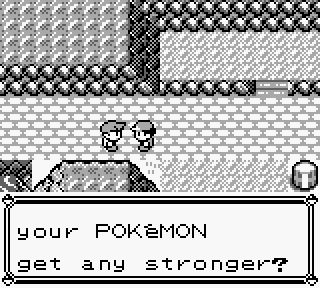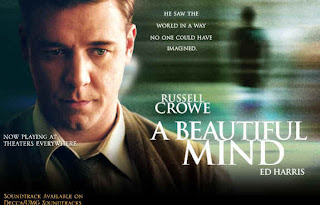The following is a research paper written for my Film Aesthetic and Analysis class my freshman year. Deepa Mehta's film "Water" sheds light on the untold stories of Hindu widows in India during the late 1930's. This film dives into the cultural and political aspects of the time period as well as the pressing issues of cultural discrimination. After having re-watched this film I now plan to watch "Earth" and "Fire" (the other two films in her "Elements" trilogy). This paper focuses on the use of a particular symbol, the green caged bird, to convey the overall theme of the film in relation to the societal contrasts placed on widows and misogyny in Hindu culture. Having written this paper for a class I have never been able to publish my analysis of this film. I feel as though this blog dedicated to all things film would be the greatest outlet to do so.
Water's mise-en-scene a look at props, misogyny, and cultural constraints
The
concept of using props in mise-en-scene to help depict a film’s theme is a
widely used technique employed by filmmakers around the world. This
film element is used to help convey the main idea of a film, as known as the
theme. Filmmaker Deepa Mehta utilizes props in the “the third part of [her]
‘Elements’ trilogy” (“Water”). Her film Water greatly relies on props to help convey widows’ feelings of being “caged
up” and their desire for escape from the cultural constraints of their Hindu society.
Mitthu, the green caged bird in the film can be seen as a central prop that clearly
displays the hardship and societal constraints placed upon women in a
traditional Hindu society.
Mitthu is not simply an instrumental
prop but has metaphoric and symbolic meanings.
The bird’s green color is symbolic in itself; green often represents
nature, fertility, and life. The
coloration of the bird serves as counterpoint in that the widows are being
deprived of freedoms in a matter that could be deemed unnatural. Traditional
Hindu cultural beliefs have taken on the role of the “natural” or the norm
within society, which ironically lead to inhumane and “unnatural” treatment and
discrimination against women. Hinduism deems
“sutee” to be an acceptable and “natural” practice when in actuality it is disturbing and anything but natural. Sutee also known
as sati is “the Indian custom of a widow burning herself, either on
the funeral pyre of her dead husband or in some other fashion, soon after his
death”(Sutee (Hindu
Custom)-Encyclopedia Britannica). This ancient practice is an extreme example
of the discrimination against women in Hindu society, but at the same time, it
is this discrimination that is deemed to be as “nature” intended. The Hindu
culture among many Indians goes unquestioned and is considered to be “just the
way things are” or natural. The Hindu culture has been around since 1500 BCE
yet still has over 1.5 million followers, this growth and retention rate
clearly shows how ingrown in society Hinduism has become (Hinduism: The World’s
Third Largest Religion). The fact that
these traditions are so old may explain how they have come to symbolize nature
or the natural state of things in Hindu society; such traditions, Hindus
believe, should serve as guidelines to how society should conduct itself. Most of the widows in Water particularly the elders who were brought up unquestioning the
society they were apart of may believe that the discrimination they were experiencing
is in fact “natural.” The color green’s meaning of fertility is ironic as
well with regards to the cultural constraints placed upon widows in Hindu
society that forbid them to remarry or to pursue their sexual desires. Even the thought of remarrying was considered
a sin. Finally and perhaps the most extreme case of counterpoint depicted
through the caged bird’s green color may be that although the color green
represents life, the bird, and by extension the widows, are not experiencing
life at all. The weight placed upon them
by their Hindu society isolates them from the rest of the world and takes away
their freedom. Corrigan and White describe props as being used to express a
character’s “powers and abilities in the world”(p.69); with no power or ability
the widows have no strength or say, and by extension, no life. The society they are a part of views them as
worthless and has no respect for their life or well-being. This religious
misogyny strips them of their humanity.
The bird is also seen as a pet and as
such there is implied ownership. The
bird belongs to Madhumati and is
trapped by her and the traditional beliefs she stands for—just like the women are
in the widows’ temple, known as an ashram. Madhaumati assumes the role of the
“enforcer” and makes the widows stay true to their religion as prescribed in
the Vedas (BBC - Religions - Hinduism: Scripture). She sees to it that all of the widows, like
the bird, are kept in a cage of sorts locked away from the outside world. This concept is physically exemplified in the
film by Kalyani who is physically locked in her room in the ashram, cut off
from the outside world, and forcibly constrained by the traditional Hindu
beliefs. The bird’s isolation from the
outside world is a parallel to the alienation the Hindu widows feel in their
society.
The Hindu culture relies on the caste
system, or “gotra,” this Hindu system of social stratification is based upon
lineage and creates divisions among different social ranks (“Gotra (Indian
Caste System)”). The caste system’s brake down into social ranks directly
relates to the restriction and say one has in society. Water is set in the 1930s when this belief system, along with
traditional Hindu customs, were very rarely questioned; therefore, once one is
placed in their social rank it was all but impossible to advance in society ("I
Have a Right To... | BBC World Service”). This system cast widows among the
“untouchables,” the lowest caste, creating such a stigma against them that in
extreme cases, such as in the movie, people would avoid their shadows to avoid
becoming unclean. There is no escape within the system, as the bird can
demonstrate. This caged bird helps to
demonstrate the theme of exploitation and social restriction placed upon women
by their society as well as the strain some Hindu traditional beliefs can place
upon those in the caste system, in this case specifically widows. The bird is a
prop that condensates a large amount of meaning beyond what it physically
is. This prop embodies the trapped
lifestyle of the widows being confided to their “cages” by their society. The
prop also serves as counterpoint to express the aspects of life the widows will
never experience while being discriminated against by cultural and religious
traditions.
The caged bird not only displays the
constraints placed upon widows by their society but also the futility of any attempt
to escape the caste system, social regulations, and the stigma against widows
in the Hindu culture. Madhaumati, Hindu culture, and a cage trap the bird. The bird does, however, experience freedom
shortly as it is pulled from the cage by the protagonist—a little girl named Chuyia—but
is quickly killed. This can be symbolically related to the death of Kalyani who
for a brief moment experiences freedom but is ultimately unable to stand up to
the pressures of her society and finds suicide to be her only escape. The bird’s death once out of its cage can
represent the difficulty, if not impossibility, of those restricted by the
caste system to escape their societal constraints and may also represent the
difficulty of improving one’s quality of life in a system where social
stratification is so great. The
inability for the widows to survive, as we can see through Kalyani’s death, can
metaphorically be shown through the crushing hands that kill the newly freed
bird. We can see the clear parallels
between Kalyani—symbolically representing widows in the Hindu society—and the
bird; the bird is freed and its isolation is lifted, however, left in the hands
of an oppressor it is unable to truly be free.
Similarly when Kalyani leaves the ashram, she cannot make her way in
society, improve her caste standing, or have the chance to remarry. These
restrictions have been built into Hindu society, and even though for a time Kalyani
and her would be husband Narayan plan to marry and break with tradition, they
are doomed to fail. The use of the bird
as a prop illustrates how difficult it is to break with cultures and traditions
that are firmly built into a society.
The bird’s function as a prop in mise-en-scene helped to develop this
theme and the poor outcomes of attempting to go against traditions within a society
even if that society is wrong.
The use of the green caged bird as a
prop can be interpreted to demonstrate the misogynistic social norms that exist
in Hindu society as well as the rigidness of the traditional Hindu caste
system. The bird’s momentary freedom followed by its death can also
metaphorically represent the hopelessness and difficultly of breaking free from
the “cage” that the caste system and Hindu religious traditions can force upon
the individual. Deepa Mehta’s cinematic
piece Water relies heavily on that
which is within the scene as described by Hayward;(253) props help convey the
theme of the film and challenge audiences to question traditional discrimination
against women and the dangers of drastic social stratification—and specifically—certain
radical aspects of Hindu society.
Works
Cited
"BBC -
Religions - Hinduism: Scripture." BBC - Homepage. Web. 06 Dec.
2011.
<http://www.bbc.co.uk/religion/religions/hinduism/texts/texts.shtml>.
Corrigan,
Timothy, and Patricia White. Film
Experience: An Introduction. New York,
NY: Bedford/St. Martins, 2009.
Print.
"Gotra
(Indian Caste System) -- Britannica Online Encyclopedia." Encyclopedia –
Britannica
Online Encyclopedia.
Web. 09 Dec. 2011.
<http://www.britannica.com/EBchecked/topic/239834/gotra>.
Hayward,
Susan. Cinema Studies: the Key Concepts. London: Routledge, 2007. Print.
"HINDUISM:
The World's Third Largest Religion." Web. 06 Dec. 2011.
<http://www.religioustolerance.org/hinduism.htm>.
"I Have a
Right To... | BBC World Service." BBC - Homepage. Web. 06 Dec.
2011.
<http://www.bbc.co.uk/worldservice/people/features/ihavearightto/four_b/casestudy_art01.shtml>.
"Suttee (Hindu Custom) -- Britannica Online
Encyclopedia." Encyclopedia - Britannica Online Encyclopedia. Web. 06 Dec.
2011. <http://www.britannica.com/EBchecked/topic/575795/suttee>.
"Water:
Deepa Mehta Completes Her “Elements” Trilogy / The Digital
Filmmaker."
Welcome
to The Digital Filmmaker /.
Web. 14 Nov. 2011. <http://digitalfilmmaker.net/dv/features/water/>.






















